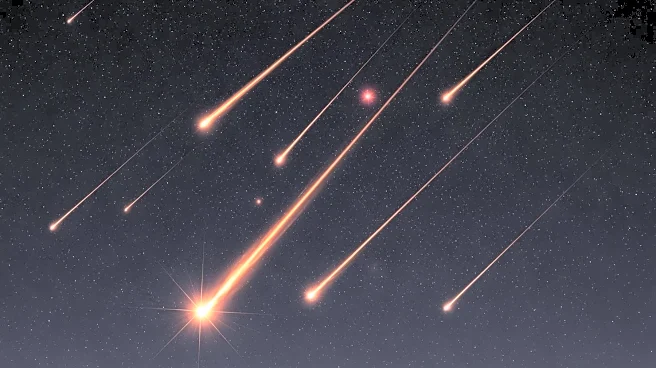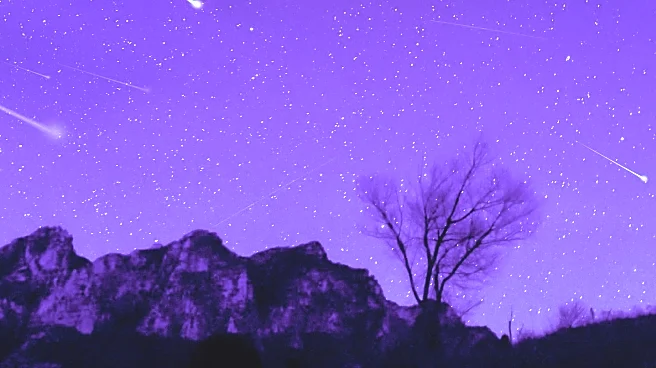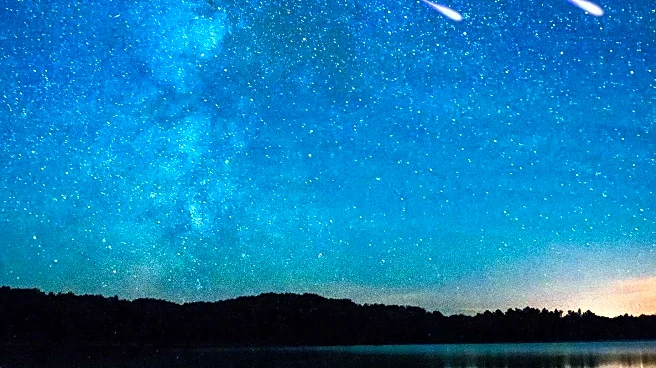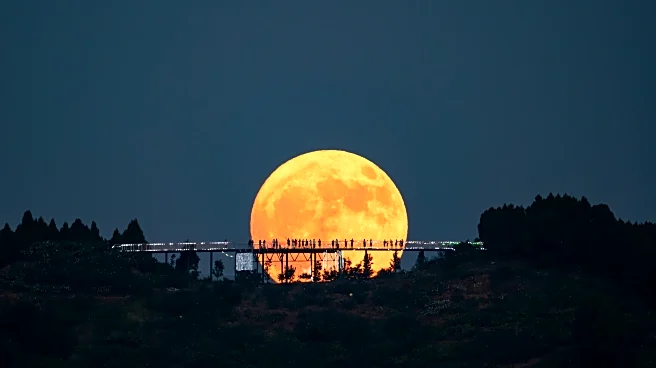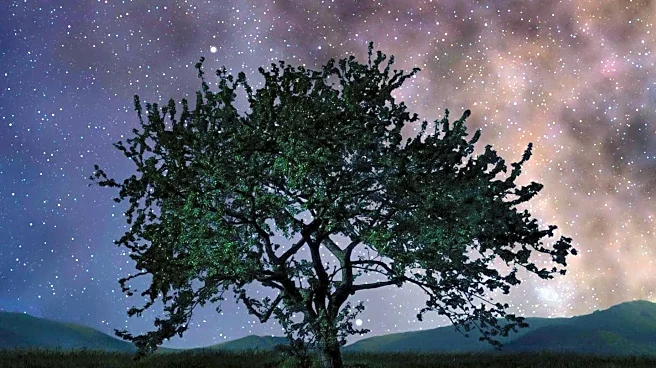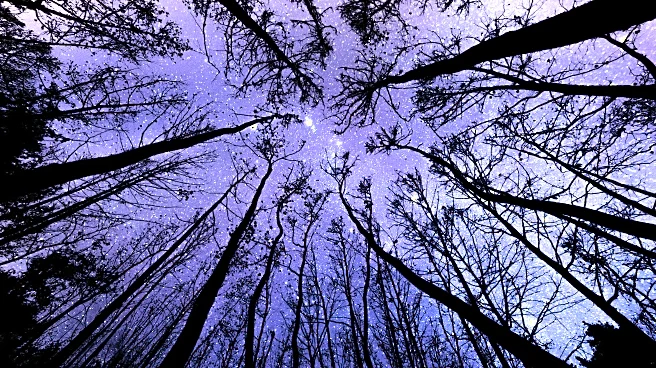What's Happening?
The Southern Taurid meteor shower is set to peak overnight on November 4-5, offering a potential display of bright meteors as Earth passes through a debris swarm from comet 2P/Encke. Known for producing
spectacular fireballs, the shower could see up to 10 bright meteors per hour, despite the presence of a near-full moon which may obscure all but the brightest meteors. This year is a 'swarm year,' a period when Earth encounters larger meteors, potentially the size of baseballs to basketballs, which appear as fireballs. The best viewing time is after midnight, with meteors appearing to radiate from the constellation Taurus.
Why It's Important?
Meteor showers like the Southern Taurids offer a unique opportunity for both amateur and professional astronomers to observe and study celestial events. The occurrence of fireballs, which are larger and brighter than typical meteors, can provide insights into the composition and behavior of cometary debris. For the general public, such events foster interest in astronomy and science, encouraging outdoor activities and educational opportunities. The visibility of these meteors, despite lunar interference, highlights the dynamic nature of Earth's interaction with space debris.
What's Next?
The next Southern Taurid swarm is not expected until 2032, making this year's event a rare opportunity for observation. Astronomers and enthusiasts are encouraged to prepare for the event by finding optimal viewing locations away from city lights and allowing time for their eyes to adjust to the darkness. The event also serves as a reminder of the importance of continued monitoring of celestial phenomena, which can have implications for understanding Earth's place in the solar system.
